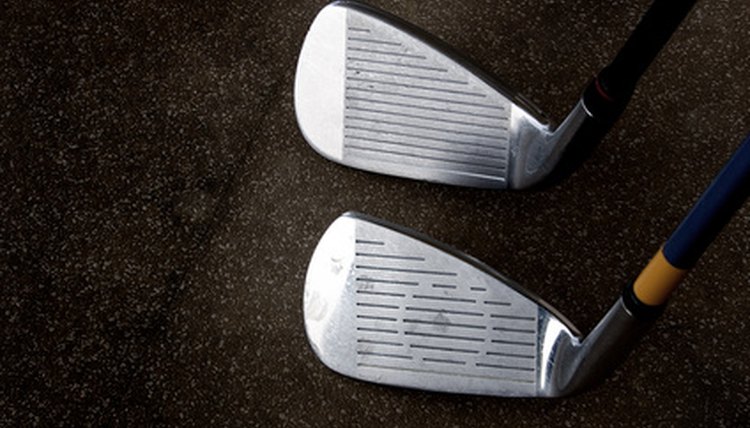The Rules on Groove Types on Golf Clubs

Grooves on golf club faces are there primarily to impart spin to the ball. They also channel water and foreign material away from the clubface, especially for shots from heavy rough.
The larger grooves on some irons allow players to be less concerned about the rough, making driving accuracy less important. For this reason the USGA implemented a set of rules changes in 2010 that tightened the limits on groove dimensions.
Overview
Grooves on golf club faces are there primarily to impart spin to the ball. They also channel water and foreign material away from the clubface, especially for shots from heavy rough.
The larger grooves on some irons allow players to be less concerned about the rough, making driving accuracy less important. For this reason the USGA implemented a set of rules changes in 2010 that tightened the limits on groove dimensions.
Traditional Requirements
Even before the 2010 rules changes, clubface groove had a number of restrictions. They always had to be straight and parallel with a consistent layout. The cross section may be U- or V-shaped as long as it is symmetrical and the sides don’t converge or have sharp or raised edges. The dimensions of each groove are limited to 0.035 inch wide and 0.020 inch deep. The required minimum spacing is three times the groove width and no less than .075 inch.
2010 Additions to Rules
For all clubs except drivers, an additional restriction is on the ratio of the cross-sectional area of each groove to the groove spacing.
This parameter must not exceed 0.003 square inches/inch, so deeper or wider grooves must be farther apart and those closer together cannot be as deep and wide. For clubs with lofts of 25 degrees or more (five iron and shorter clubs) there are even more restrictions. The edges of the grooves must be round with a radius of between 0.010 and 0.020 inch. Contrary to popular reporting on this issue, these restrictions do not outlaw the U-shape, also know as square or box grooves. They simply limit the size, spacing and the sharpness of their edges.
Impact of 2010 Changes
According to Titleist, the new rules meant a 30 percent reduction in the size of grooves and limit a club’s ability to channel away water and debris at impact.
This means 30 percent to 50 percent less spin on shots hit from the rough with very little effect on fairway shots. Shots out of the rough will now be more difficult to predict and control.
Implementation of Changes
Professional golfers already began using clubs that conform to the new rules in 2010. By 2011 all newly manufactured clubs must conform to the tighter standards although retailers can sell existing stock until it is gone. Amateurs may continue using their existing equipment, but beginning in 2014 the new rules will apply to USGA and NCAA competitions, and in 2024 everyone’s equipment must meet the new restrictions.
Ping Wedges
The complicated story includes another twist. In the settlement of a 1990 lawsuit against the USGA, Ping Golf won the right to have its Eye-2 irons exempt from any future rule change regarding grooves. This meant that tour players could continue to use these older clubs. Several PGA Tour players, including Phil Mickelson, exercised that right by using Ping Eye-2 wedges on the tour in early 2010, much to the dismay of the USGA and outrage from other tour players. Fortunately, Ping settled this dispute by waiving legal rights and allowed the USGA to outlaw the older clubs.
Writer Bio
This article was written by the CareerTrend team, copy edited and fact checked through a multi-point auditing system, in efforts to ensure our readers only receive the best information. To submit your questions or ideas, or to simply learn more about CareerTrend, contact us [here](http://careertrend.com/about-us).
